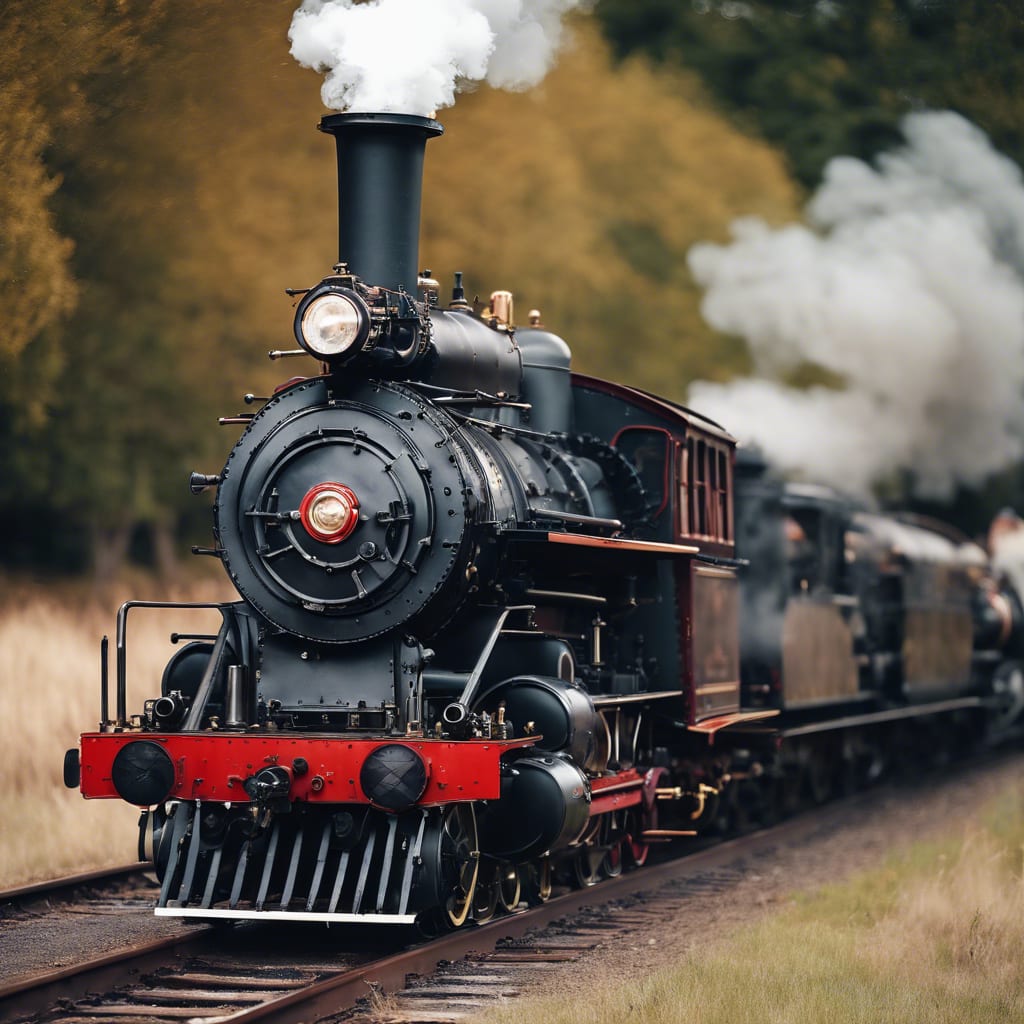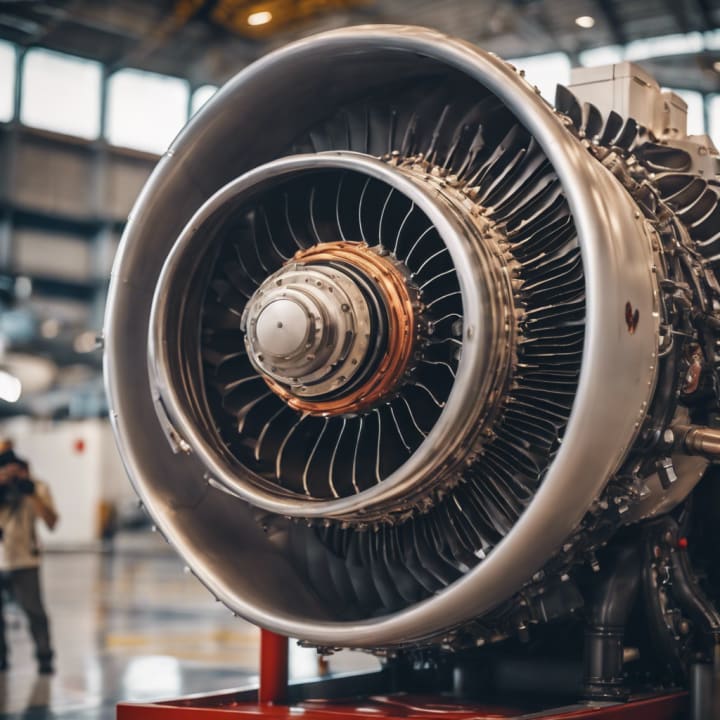Content warning
This story may contain sensitive material or discuss topics that some readers may find distressing. Reader discretion is advised. The views and opinions expressed in this story are those of the author and do not necessarily reflect the official policy or position of Vocal.
The Timeless Marvel of Steam Engines: Driving the Past, Shaping the Future
The Wheels of Justice: A Rusty Journey

Imagine a future in which the steady chug of powerful iron creatures, their plumes of steam painting the sky as they weave connections over enormous expanses, serves as a barometer for progress. This was 19th-century reality, a century characterized by the revolutionary force of steam engines. These technical wonders sparked a revolution that altered society in addition to powering factories and locomotives. Come along as we explore the fascinating history of steam engines and their enormous influence on business and society, as well as the ongoing legacy of innovation they inspired.
The Genesis of Steam: From Concept to Creation
Imagine a world in which engineers and inventors were competing to use steam, an invisible energy, to power their innovations. The invention of a technology that would spark the Industrial Revolution may be traced back to James Watt's groundbreaking improvements after his initial trials.
The main purpose of early steam-powered machinery, such as Thomas Newcomen's atmospheric engine, was to pump water out of mines. Despite being revolutionary, these early designs were ineffective and had a narrow focus. James Watt made the crucial advancements that turned the steam engine into a highly effective and adaptable device in the 1760s. Watt added a separate condenser, which reduced the quantity of steam required to run the engine and greatly increased efficiency. Because of their rotating motion mechanism, steam engines are now essential to many different industries as they can power factory machinery.

The evolution of steam power was a reaction to the expanding demands of a society on the verge of an industrial revolution, not merely a sequence of technical triumphs. The drive to advance steam technology was a reflection of a larger goal: to break free from the constraints of nature and develop alternative energy sources. These years of ceaseless innovation and exploration prepared the ground for the revolutionary shifts that came next.
Revolutionizing Industry: Steam Power’s Impact on Production
Enter the heart of a 19th-century factory, where the sound of furnaces and machine clatter produced an industrial might symphony. Steam engines revolutionized manufacturing by eliminating the need for water power and manual labor.
The majority of production was done on a small scale prior to the invention of steam power, due to the limitations of human and animal labor or the need to be close to water supplies for waterwheels. Rivers were frequently in close proximity to factories, which limited their placement and uniformity of operation. By releasing industries from these geographical and operational restrictions, steam engines made it possible for factories to be constructed in more convenient places and to run continually, regardless of the weather.
The textile industry was among the first to be impacted by steam power. Power looms and spinning jennies, two examples of steam-driven machinery, significantly enhanced output and efficiency. In addition to bringing down the price of products, this productivity boom also altered the social structure of countries as people moved to cities in pursuit of employment.
Steam power was also very beneficial to ironworks Steam hammers and rolling mills allowed for the mass manufacture of iron and steel, which are essential building elements for ships, railroads, and bridges. Steam engines and the industries they supported developed a symbiotic relationship that spurred expansion and innovation, ushering civilization into a new era of industrial capability.

The Iron Horse: Connecting Continents and Cultures
Consider the thrill and anxiety of boarding a steam locomotive—the iron horse that linked far-off places and various civilizations. The invention of the railway reduced the size of continents and increased global accessibility, revolutionizing trade and travel.
The early 19th century saw the invention of steam-powered locomotives, which completely changed the face of transportation. With the introduction of George Stephenson's Rocket in 1829, steam-powered rail travel was shown to be both feasible and effective. Railways quickly connected previously remote areas and allowed for the quick transportation of people and products throughout Britain, the rest of Europe, and North America.
Because they made it possible for items to be carried over large distances swiftly and affordably, railroads allowed markets to flourish. Due to the efficient trading of regional specializations, which increased productivity and creativity, this interconnectedness promoted economic progress. Additionally, railroads were essential to the settlement and growth of large areas, like the American West. Establishing a sense of national identity and purpose, the Transcontinental Railroad's completion in 1869 represented the unity of the United States.
The railway had a huge cultural impact. It altered people's perceptions of time and space, facilitating more frequent travel and increasing accessibility to far-off locations. The movement allowed for the flow of ideas and cultures, resulting in a more integrated globe. The iron horse grew to represent the era's spirit of exploration and development and evolved into a potent emblem of modernity and progress.
Cultural Icons: Steam Engines in Literature and Art
Shut your eyes and picture the mighty steam engine, a representation of development and adventure, chugging over hazy landscapes. Steam engines have captivated the imagination of culture, from Jules Verne's exciting stories to the inventive creations of the steampunk subgenre.
Numerous tales and artistic creations have been influenced by steam engines, which have come to symbolize a time of invention and exploration. The spirit of the era is captured in Jules Verne's 1873 novel "Around the World in Eighty Days," which uses the steam engine as a metaphor for humanity's struggle to overcome time and space. Verne's writings and those of other modern writers captured the wonder and enthusiasm around technological0vgy7g breakthroughs and their potential to completely transform society.

Railways and steam engines have long been prominent motifs in visual art. The astounding size and strength of these machines are shown in the intricate drawings of industries and railroads from the late 19th and early 20th centuries. Artists like J.M.W. Turner depicted steam trains as symbols of progress in the economy and the extraordinary inventiveness of humankind.
The steam engine era is largely responsible for the aesthetic and thematic appeal of the steampunk subgenre, which combines Victorian aesthetics with futuristic technology. This subgenre celebrates the artistry and craftsmanship of the steam age by imagining a future in which steam power continues to be the primary technology. The persistent appeal of steampunk is evidence of the cultural resonance of steam engines and their capacity to stimulate imagination and innovation.

The Legacy of Innovation: Lessons for the Modern Era
Think about how steam technology continues to impact modern inventions. The principles of steam power have enabled the creation of modern engines and energy solutions.
Beyond their historical uses, steam engines had a significant influence since they paved the way for later technical developments. The development of steam technology led to the development of significant concepts in thermodynamics and mechanical engineering, concepts that are still vital to modern energy and engineering systems.
Internal combustion engines, electric generators, and even contemporary turbines utilized in power plants were designed with the efficient conversion of heat into mechanical work—principles acquired from steam engines. The ongoing search for more potent and effective ways to capture energy is clear evidence of the steam engine's influence.
The history of the steam engine provides insightful information that is still relevant today as we navigate the difficulties of switching to sustainable energy sources. The desire for cleaner, more efficient power led to the transition from steam to electricity and internal combustion. The current move toward renewable energy sources and the creation of new technologies to address environmental concerns are mirrored in this historical movement.
The ability of human creativity to overcome challenges and propel development is something that the steam engine tells us. It serves as a reminder that every technological advancement builds on the knowledge gained from the past and moves us closer to a more creative and sustainable future.
Nostalgia and Preservation: Keeping the Steam Dream Alive
Experience the excitement of being next to a restored steam engine, a working artifact from the past, with its pistons pumping and steam hissing. Preservationists and enthusiasts are committed to maintaining these devices operational, honoring their historical significance.
To preserve and repair steam engines, devoted groups of enthusiasts and preservationists labor nonstop throughout the world. By making these efforts, it will be possible for future generations to directly witness the wonder and strength of these mechanical wonders. Visitors can immerse themselves in the era of steam by visiting heritage railways, steam festivals, and museums.
Feel the thrill of being next to a restored steam engine, a functional historical relic that hisses and pumps steam. To preserve these tools and respect their historical significance, enthusiasts and preservationists are dedicated to keeping them in working order.
Around the world, passionate groups of enthusiasts and preservationists work around the clock to maintain and restore steam engines. Future generations will be able to see firsthand the power and awe of these mechanical marvels thanks to our efforts. By visiting museums, steam festivals, and heritage railways, visitors can fully immerse themselves in the steam period.
PreservatioThe preservation is about more than just keeping the machinery working; it's about paying tribute to an important period in human history. These initiatives honor the inventiveness and tenacity that drove the Industrial Revolution and still serve as a source of inspiration for modern technological developments. We keep a physical link to the past and provide future generations with inspiration by conserving steam engines.
Outro: The Everlasting Spirit of Steam
Exploring the rich history of steam engines reveals more than simply the tale of a game-changing invention; it also reveals the fundamental qualities of human ingenuity and resiliency. Steam engines have had a profound effect on industry and culture, as well as leaving an enduring legacy in technology and culture. They serve as a constant reminder of the creative and exploratory spirit of humanity, as well as the limitless possibilities of human intellect.
The steam engine serves as a reminder of the significant and long-lasting changes that invention may bring, especially in a time when technology is developing at a rapid rate. It pushes us to look forward with inspiration and back with gratitude, understanding that the spirit of creation that propelled the steam era is still driving our pursuit of a better, more interconnected future.
In addition to paying tribute to the history of steam engines, we also embrace the teachings they impart: the importance of having big dreams, overcoming obstacles, and using our creativity to propel forward. With its ageless charm, the steam engine continues to serve as a symbol of what is possible if we have the guts to push the envelope.
About the Creator
Enjoyed the story? Support the Creator.
Subscribe for free to receive all their stories in your feed. You could also pledge your support or give them a one-off tip, letting them know you appreciate their work.






Comments
There are no comments for this story
Be the first to respond and start the conversation.